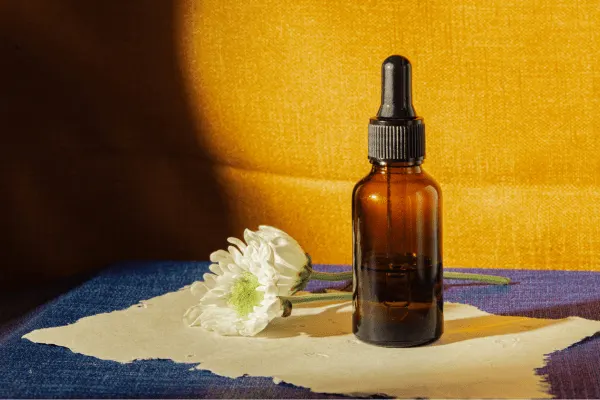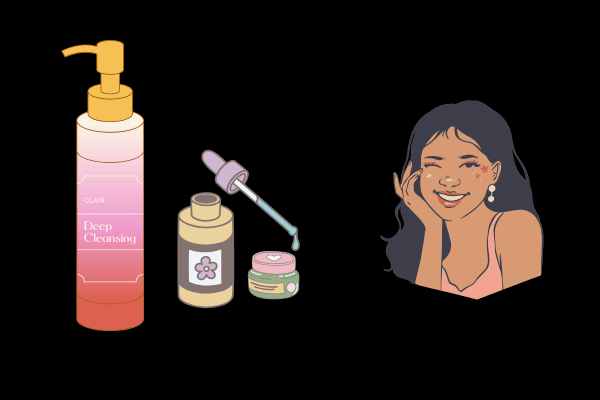What are acids in Skincare?
Acids are active ingredients in skincare that work to solve specific problems, such as acne control, hyperpigmentation, exfoliation, and more. These acids remove dead cells from your skin and reveal new, fresh skin. You can also learn about skincare actives and the importance of skincare.
Let’s start to understand the different types of Acids

AHA (Alpha Hydroxy Acids)
AHAs are chemical exfoliants that gently remove dead skin cells from the upper layer of the skin. They are mostly found in natural resources such as Sugarcane, Milk, Oranges, and Apples.
Q. How does AHA work?
- AHA works on the surface of the skin:
- AHA dissolves skin cells
- exfoliates skin
- works on pigmentation and dark spots
- even skin tone, and reduces fine lines.
Types of AHA
Glycolic acid
Lactic acid
Mendelic acid
Citric acid
Malic acid
BHA (Beta Hydroxy Acid)
It’s an oil-soluble chemical exfoliant that sneaks into the pores and cleans them deeply. Salicylic acid is the most common BHA.
Q. How does BHA (Beta Hydroxy Acid) work?
- Remove dead skin cells
- Dissolve excess oil (sebum)
- clean clogged pores
- Reduce blackheads and whiteheads
- Reduce acne-causing bacteria and inflammation.
PHA (Polyhydroxy Acid)
Polyhydroxy Acid is a gentle member of the AHA (Alpha Hydroxy Acid) family, but PHA is a milder acid compared to AHA and BHA, which is why it’s perfect for sensitive skin and beginners. This acid has a large molecular size, it gradually absorbs into the skin, which provides a gentle exfoliant.
Q How do PHAs (Polyhydroxy acids) work?
- Gently removes dead skin cells
- Provides hydration (humectant property)
- Protects the skin barrier
- Decreases irritation

Glycolic Acid
Glycolic acid is an AHA (Alpha Hydroxy Acid) which is extracted from sugarcane, It’s a chemical exfoliant that removes dead skin cells gently.
Q. How does glycolic acid work?
- Dissolve dead skin, unclog the pores
- Make skin smooth and glowing,
- Boost collagen production.
Lactic Acid
Lactic acid is an AHA (Hydroxy Acid) which is derived from milk. Lactic acid is a gentle exfoliant that removes dead skin cells from the outer layer of skin and makes skin soft, smooth, and hydrated.
Q How does Lactic acid work?
- Exfoliate the top layer of skin,
- Dissolving dead cells
- Reduces mild pigmentation and tanning, it’s also a humectant (draws moisture into the skin).
Lactic acid is gentler than glycolic acid.
Salicylic Acid
Salicylic acid is a BHA (beta Hydroxy). Salicylic acid is a hero ingredient for acne because it penetrates the skin’s pores to remove dirt and oil. Salicylic acid is oil-soluble. This acid is very effective for face. For pimples, clogged pores, and blackheads, salicylic acid is a must-have. This acid fights against chronic dry skin, cracked heels, and bumpy skin.
Q. How Salicylic acid work?
- Penetrates deep into pores to break down excess oil (sebum)
- Exfoliate dead skin cells
- Dissolve whiteheads and blackheads
- Fight with acne-causing bacteria
Urea acid
Urea is a hydrating and keratolytic (exfoliating) ingredient which used as a moisturizer or treatment in skincare. This acid found in our skin naturally as a part of the Natural Moisturizing Factor (NMF). This acid is not an animal product, it is made synthetically in a lab.
Q. How does urea work?
Urea is used in two ways:-
1. Low concentration (2-10%)
- Provide Hydrating
- Makes skin soft and smooth
- Lock the moisture on the skin
2. High concentration (10-40%)
- Dissolve dead skin (exfoliation)
- Helpful in conditions like calluses, cracked heels,

Vitamin c
Vitamin C is a powerful antioxidant that makes skin glow and bright. Vitamin C is derived from fruits like oranges, amla. It’s mostly used as a serum form in skincare.
Q. How does vitamin C acid work?
- Brighten up the skin
- This acid Protects from sun damage and pollution
- Improves skin texture and collagen production
- Fade pigmentation and dark spots
- Work for premature ageing signs like wrinkles, fine lines.
- vitamin c acid Makes skin naturally glow
Alpha Arbutin
Alpha arbutin acid is a brightening ingredient that mainly focuses on hyperpigmentation, dark spots, and uneven skin tone. It is naturally derived from the bearberry plant. Alpha arbutin penetrates the skin and controls melanin production. Melanin is the pigment that provides color to skin, but when it is produced in excess, it leads to dark tanning, dark spots, or melasma.
Q. How does alpha arbutin acid work?
• It’s a type of acid that fade hyperpigmentation by reducing melanin production
• Gradually fades the dark spots
• Protects pigmentation that occurs due to sun damage
• This acid brighten up the skin
• Slow melanin production process
• Protects skin from damage because of their antioxidant properties
Licorice Acid
Licorice Acid is a natural skin brightening and smoothing ingredient. It comes from the roots of the licorice plant. Licorice Acid mainly targets pigment and redness.
Q How does the acid work?
Licorice Acid contains Glabridin (a powerful compound) which –
• Prevent the formation of melanin – reduces dark spots
• Licorice acid Reduces inflammation and redness
• Without any irritation provides gentle brightening to the skin.
• This is a type of acid that soothes sun damage and the effects of tanning

Retinol
Retinol is a very powerful acid; it’s a vitamin A derivative, which is a superstar acid for the skin. Retinol acid mainly improves acne, dark spots, anti-ageing, wrinkles, fine lines, and uneven texture. Retinol is an anti-ageing or cell renewal booster that renews skin faster, making it look younger, smoother, and clearer.
Q How does retinol acid work?
• Turnover skin cell – Removes old, dull cells and brings new, fresh cells
• This acid boosts collagen production, decreasing wrinkles
• Clean pores – Reduces acne and blackheads
• Fade dark spots and pigmentation
• Work for enlarged pores and bumpy skin
• Retinol acid Improves skin elasticity
• As a result of cell renewal, it brightens the complexion.
Peptides
Peptides are small protein fragments that send signals to your skin cells to do their work better. Peptides support your skin’s building blocks so that your skin looks strong, smooth, and youthful. Makes protein like elastin, collagen, and keratin.
Q. How do peptides work?
- Peptides tell the skin to work harder to make collagen and elastin
- Boost the skin repair process
- Makes skin firm and tight
- Help to reduce fine lines and wrinkles
Strong skin barrier – skin retains better moisture and is protected from pollutants
Benzoyl peroxide
Benzoyl peroxide is a powerful acne treatment acid which can dry out pimples by killing acne bacteria. It is especially for those who have active acne. Preventing the growth of bacteria on skin.
Q. How does Benzoyl Peroxide acid work?
- Kills acne-causing bacteria
- Prevent clogging of oil and dead skin
- Reduce inflammation and redness
- Shrink and dry out the pimples
- Future breakouts are prevented through regular use
Ceramides
Ceramides are a type of fatty molecule, specifically lipids (fats), that are a very important part of your skin’s natural barrier. Ceramides were naturally present in the outermost layer (epidermis) of the skin. 50% of the lipid content in human skin is made up of ceramides.
Q. How do ceramides work?
• Barrier protection – ceramides protect skin from external allergens, pollutants, and bacteria.
• Moisture retention – ceramides lock water into the skin so that hydration is maintained and dryness doesn’t occur.
• Barrier repair – Ceramides help repair damage to the skin barrier when it is damaged by AHA, BHA, retinol, or harsh weather.
• Soothing and calming – If skin feels red, irritated, and sensitive, then skin gets relief by applying ceramides.


